The Jasper Johns retrospective at The Broad (“Something Resembling Truth”) is only in town until May 13, and tickets are tough to secure. But, spending an hour exploring the life of this important American artist should be a priority for you and the family this spring. The show has received rave reviews (read one from the NYTimes here, and one from the LA Times art critic here), so you know it’s important. Today, we’ll spend a little time explaining how it can be meaningful to your family.
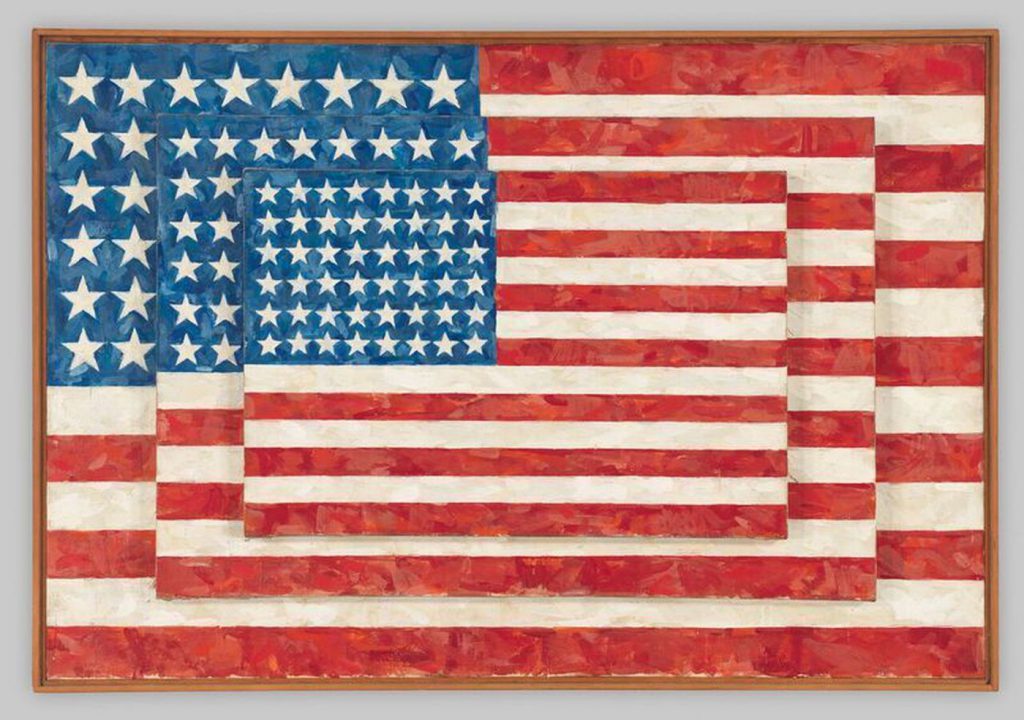
Jasper Johns’ “Three Flags” (1958)
First of all: it’s fun!
The show is arranged by topic, so the first gallery is filled with roughly a dozen of Johns’ iconic flags, which is a rare treat. Other galleries are filled with luminous number and letter paintings. Paintings leap off the walls with vibrant color and some have unusual elements sticking out of the canvas (a cup, a broom). If you are familiar with Johns, you may find yourself slightly giddy to see all these works together. For newbies, like the kids, the work is colorful and accessible.
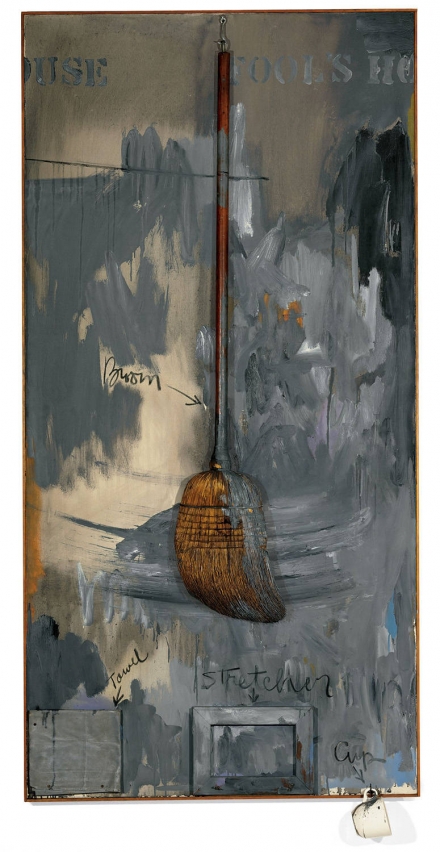
Jasper Johns “Fools House” (1964)
Kids will be engaged and curious because the items in the paintings are familiar. And then, the questions will begin: Why does he paint the same thing, over and over? Why the flag, why the targets, and why the letters and numbers? Important questions for adults and kids alike. But first, just take it all in. Seeing different renditions of the same subject matter explored from canvas to canvas produces a sense of contemplation, ultimately.
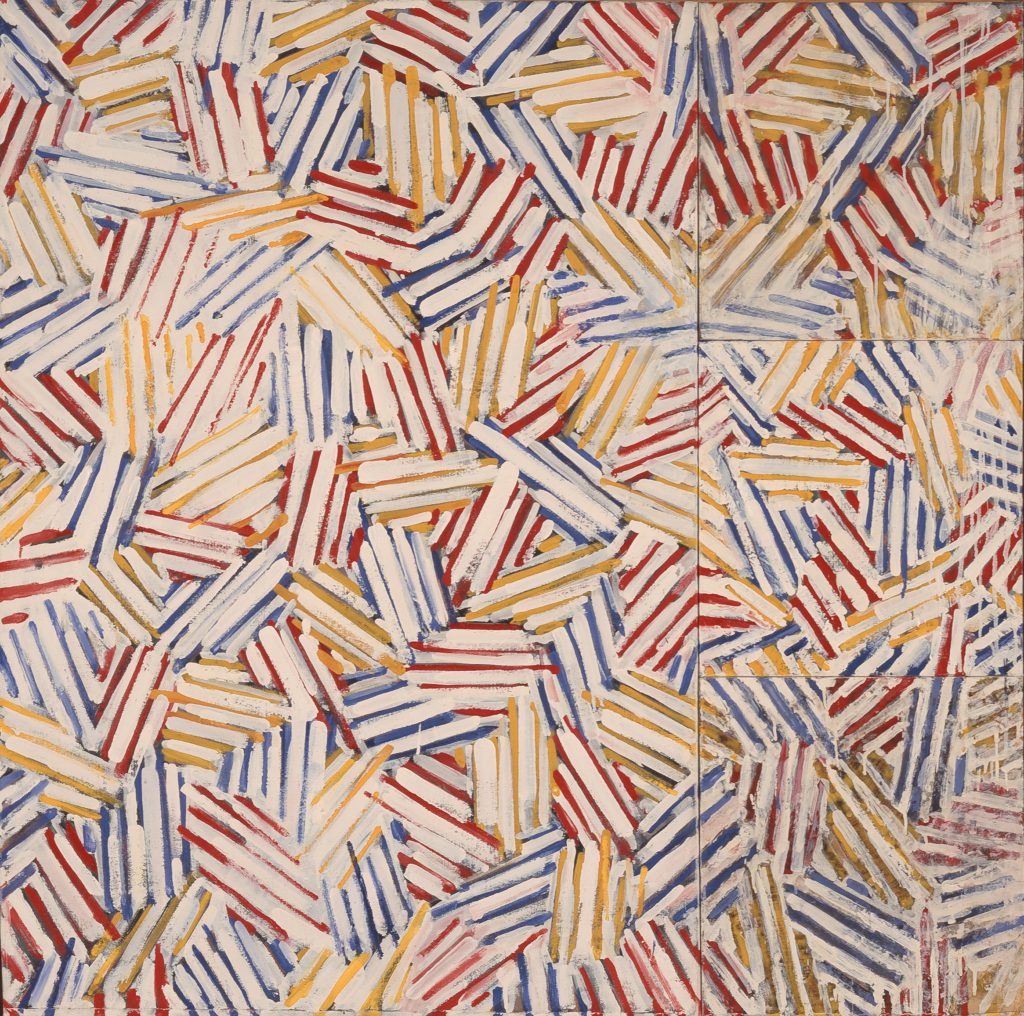
So put away your camera and get as close as the guards will allow. Johns cared about the process of painting and printmaking – he obsessed over it. In fact, his willingness to paint the same thing over and over was a way to become a better painter. In kid terms, practice makes perfect.
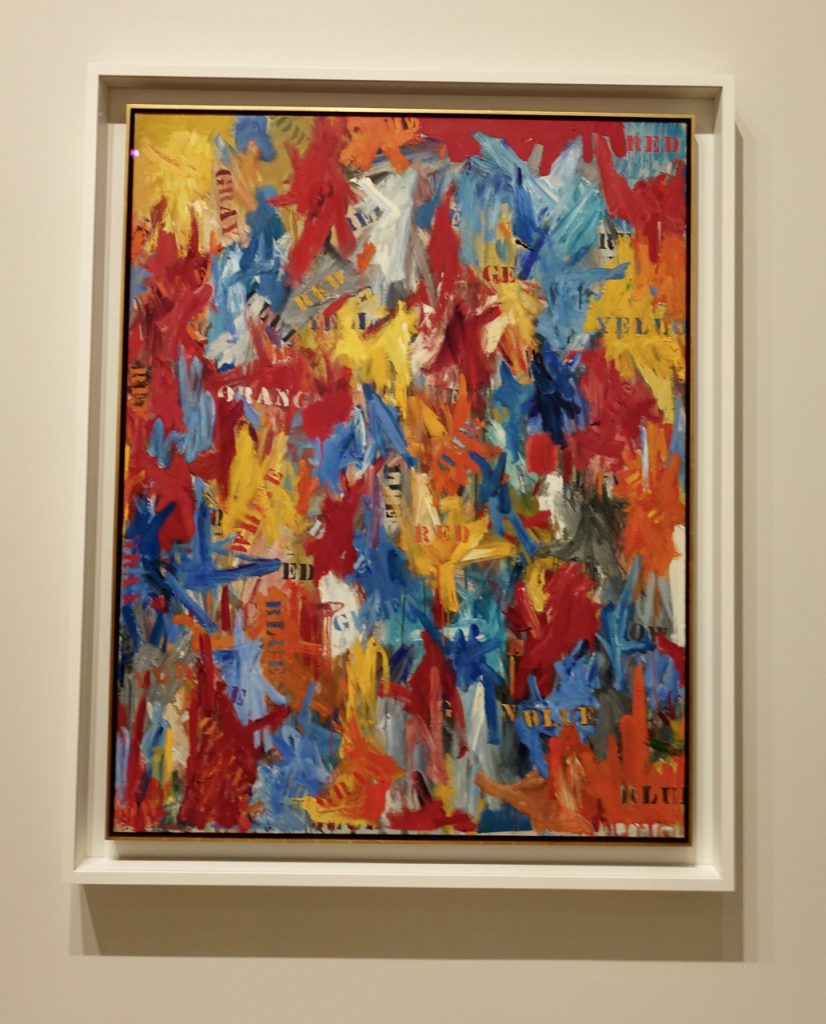
Second: The brushstrokes.
Spend some time standing close enough to appreciate the energy and precision of each brushstroke — of course, this is what is unique about seeing the work in person and something that you can’t do as well if you’re looking at a postcard of the work, or studying it in school. (Or taking photos of the paintings, which inevitably happens like crazy at a blockbuster show like this – makes me long for the days before cellphones, when we went to the gift store after an exhibit and chose one or two images that we liked best to remember the experience).
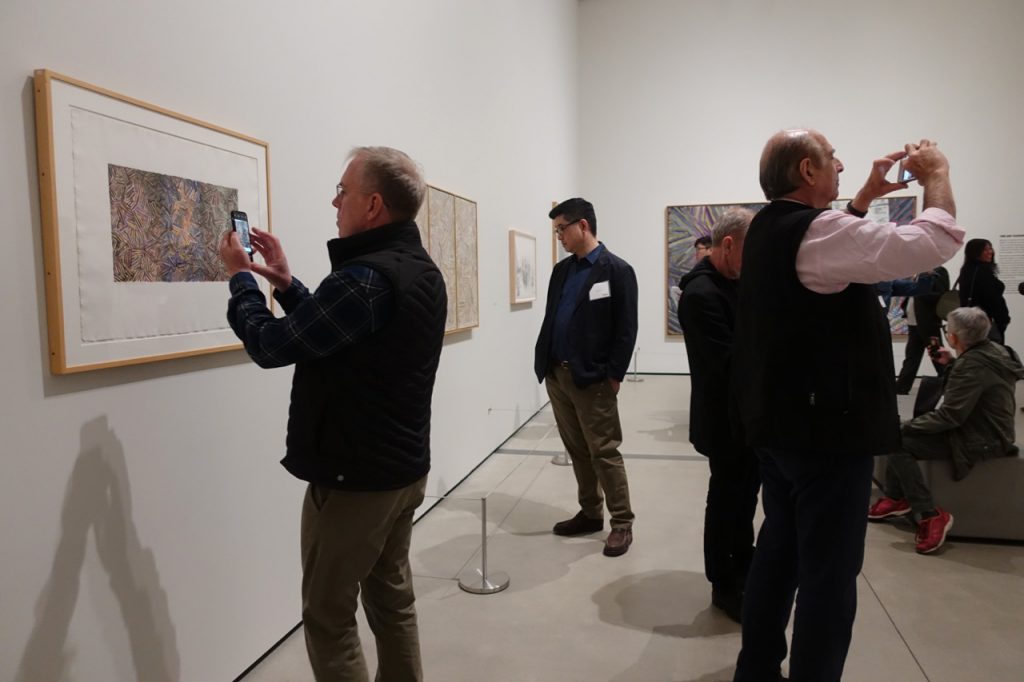 The paintings are deceptively simple, but you’ll quickly get familiar with the subject matter and will find yourself focused on the rhythm of the brushstrokes. Seeing so many of Johns’ paintings together for this retrospective allows viewers to study this idea of how the master puts paint on the canvas.
The paintings are deceptively simple, but you’ll quickly get familiar with the subject matter and will find yourself focused on the rhythm of the brushstrokes. Seeing so many of Johns’ paintings together for this retrospective allows viewers to study this idea of how the master puts paint on the canvas.

Mr. Johns in his studio reserved for print-making with a wide selection of rulers. Credit Andrew White for The New York Times
Third: Johns is 87 and probably our most important living American artist.
Jasper Johns is significant in art history because he represents the end of the Abstract Expressionist movement and the start of a new era of painting, one in which the painting itself is the thing. His work was less emotional or spontaneous than those of the Abstract Expressionist painters. He absorbed their work and chose a different path, making gradual steps forward in his own practice. Gradually, his work inspired others, and was a catalyst that ushered in the next era of Pop and Conceptual Art.
Johns wanted to be a painter since he was in kindergarten, and was pretty much self-taught. It was the band of brothers that he met in New York City – Robert Rauschenberg, John Cage, and Merce Cunningham – who were his greatest teachers.
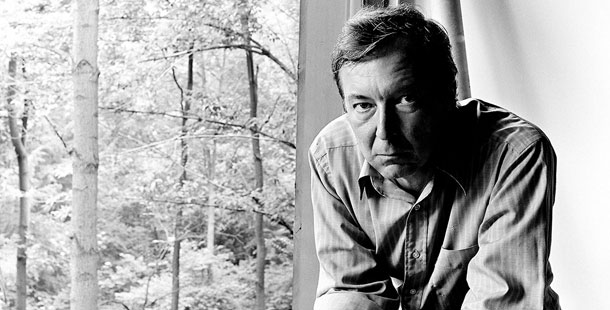
Kids might have a good time thinking about someone who knew what they wanted to do, and did it, for a lifetime. That’s a big idea. So is the notion that you can see work from all those years of practice in this exhibition. Why not have them look at the dates of the paintings and make a time line that zig-zags through the show?
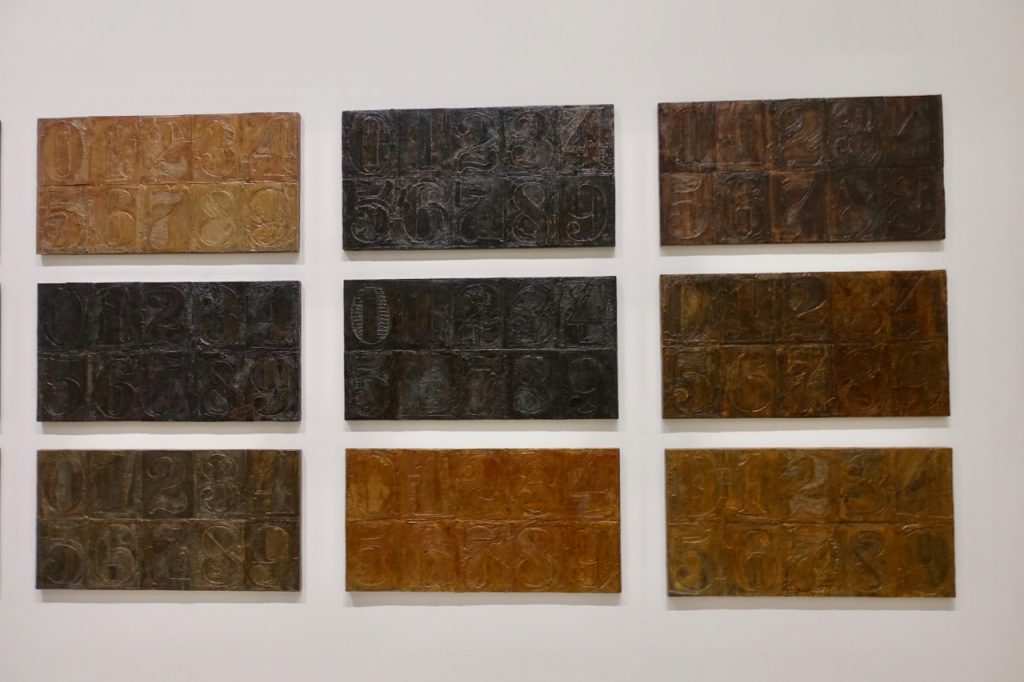
If you’re curious about Johns’ life and the evolution of his work, this is a pretty concise lesson. Near the end of the film, you can see a painting sell at auction for 7 million dollars. Remember, this was 1989. If your kids find the dollars and cents interesting, tell them that a Jasper Johns painting sold for $343 Million dollars in 2014. Seven of his paintings are in the list of the top 1000 most expensive painting sales of all time.
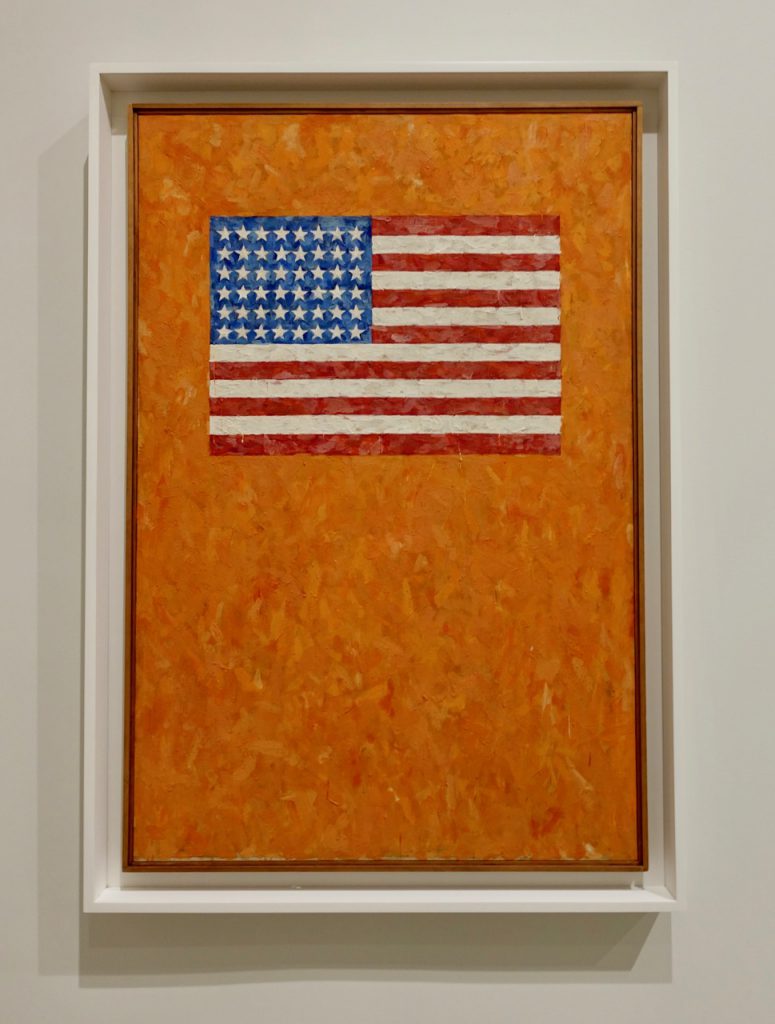
Fourth: Have a conversation about the flag (and democracy).
We’ve just enjoyed a three day weekend in honor of President’s Day holiday. Take a moment, in the first gallery with an array of Johns’ amazing flag paintings, to think about what the flag stands for. What are the values we attach to it? How does a President represent the flag? What does is mean to each child? Importantly, talk about what a democracy is. Voting, representation, the union itself. Kids need to understand these topics so they grow up to participate in our democracy. Many feel that the very state of our union is under threat right now because of the current President’s actions, and revelations about how the Russians tampered with our elections. It’s a pressing conversation for right now, and parents are the front line of teaching basic civics to the next generation.
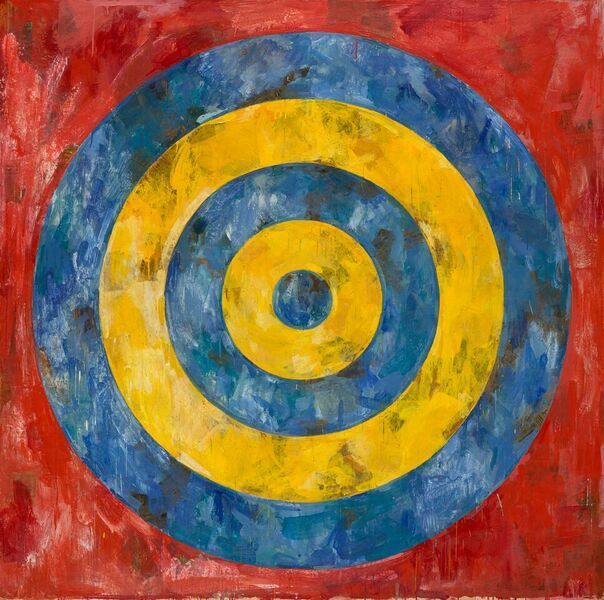
Jasper Johns “Target” (1961)
Fifth: Johns never explained what his paintings meant.
Johns is famous for not explaining his work. As an artist, he was always seeking meaning – the practice of making art is a lifetime exercise of intention. As one of the world’s most successful painters (more of his work has sold than most other artists) Johns had plenty of opportunity to explain what he meant by painting flags, and targets, and numbers, and letters. But he has consistently eschewed any effort to articulate meaning.
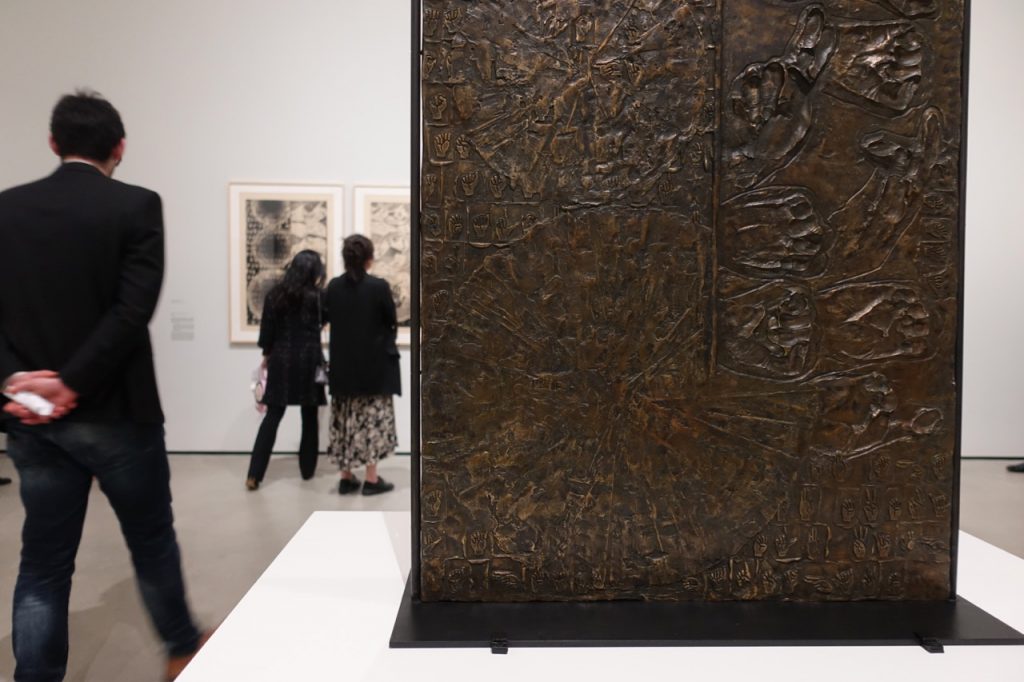
In fact, his paintings (and etchings and bronzes) seem to ask as many questions as they answer. He practiced his craft dilligently and sought always to get better. When asked, said: “The meaning may just be that the painting exists.” He chose a subject to work with (a grid of numbers, a map of the U.S.) so that he could meaning-making aside and just perfect his craft.
What do the kids think about that? And, what do you think?
Although Johns said he didn’t want meaning to creep into his work, in later years, inevitably it did. The four paintings below are titled “The Seasons” and depict all the stages of life – from infancy to old age. They’re beautiful, and emotional, and have all sorts of meaning. As the kids if they think Johns is withholding his feelings, or expressing them?
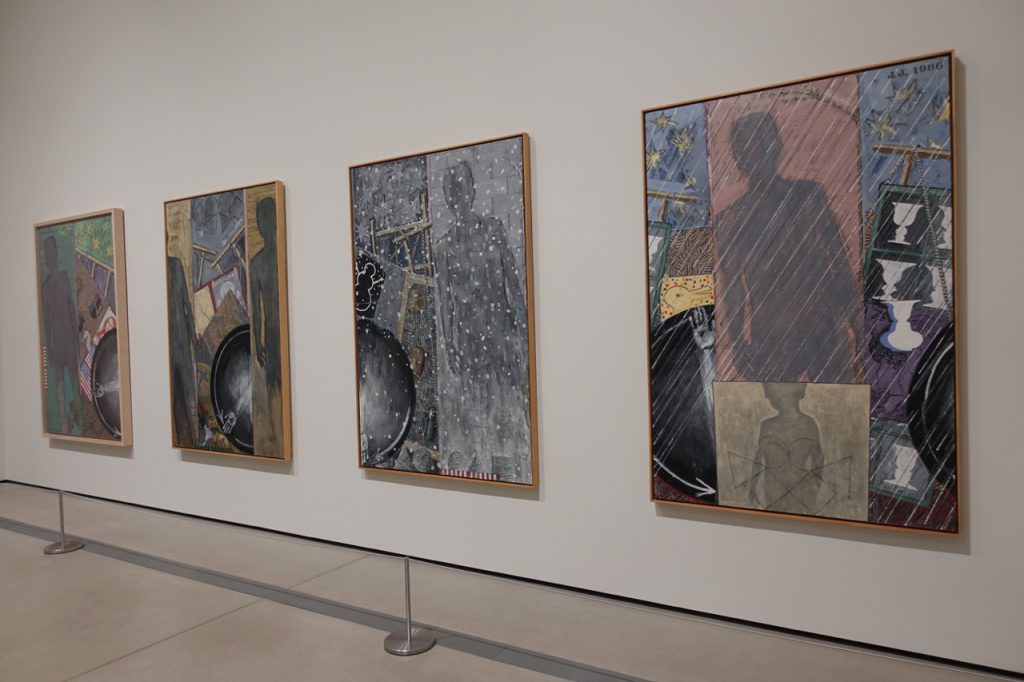
Jasper Johns “The Seasons: Spring, Summer, Fall, Winter”

